If you’ve shared your home with a bird, you know they can find trouble quickly. One moment they’re preening, and the next, they’ve snagged a feather or decided to chew something sharp.
A first aid kit for your pet bird isn’t just a good idea—it’s essential.
I’ve had birds for years, and I’ve reached for my kit more times than I’d like to admit. Whether it’s a bleeding toe from a nail trim or a surprise fall, a well-stocked kit can help before you reach the vet.
Let’s go over what you need, why it matters, and some lessons I’ve learned the hard way.
Why Every Bird Owner Needs a First Aid Kit
Birds are delicate little creatures. Their bones are hollow, their skin tears easily, and they hide illnesses like it’s some sort of sport. By the time a bird shows obvious signs of trouble, the situation can already be serious.
A first aid kit is your safety net. It won’t replace a vet (and please don’t try to play doctor with Google as your medical degree), but it buys you time in those scary moments.
Think of it like having jumper cables in your car. You hope you’ll never need them, but the day your battery dies, you’ll thank yourself.
The Must-Have Supplies for a Bird First Aid Kit
1. Styptic Powder or Cornstarch
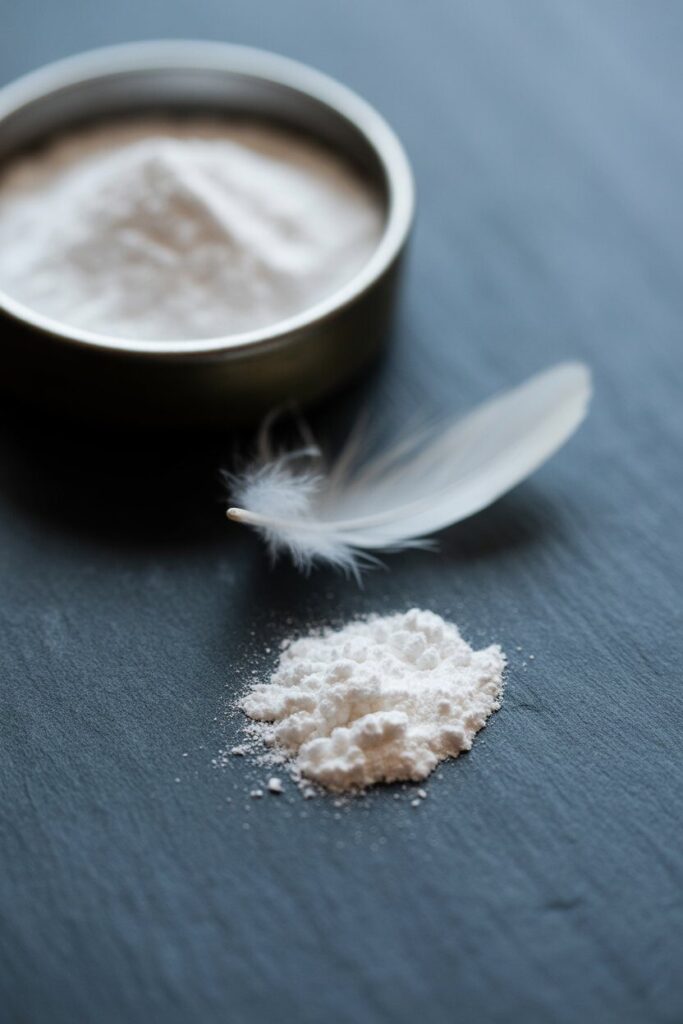
Let’s start with the most important item. Birds bleed easily, and even a small cut or broken feather can turn into a big deal quickly. Styptic powder stops bleeding almost instantly.
- Use it for bleeding toenails if you accidentally clip too short.
- Dab it on a broken blood feather to control bleeding.
- If you don’t have styptic powder, plain cornstarch works as a backup.
Pro tip: Never use those styptic sticks meant for shaving. They sting like crazy, and your bird will never forgive you.
Check these trusted bird first aid picks now on Amazon
2. Clean Gauze Pads and Cotton Balls
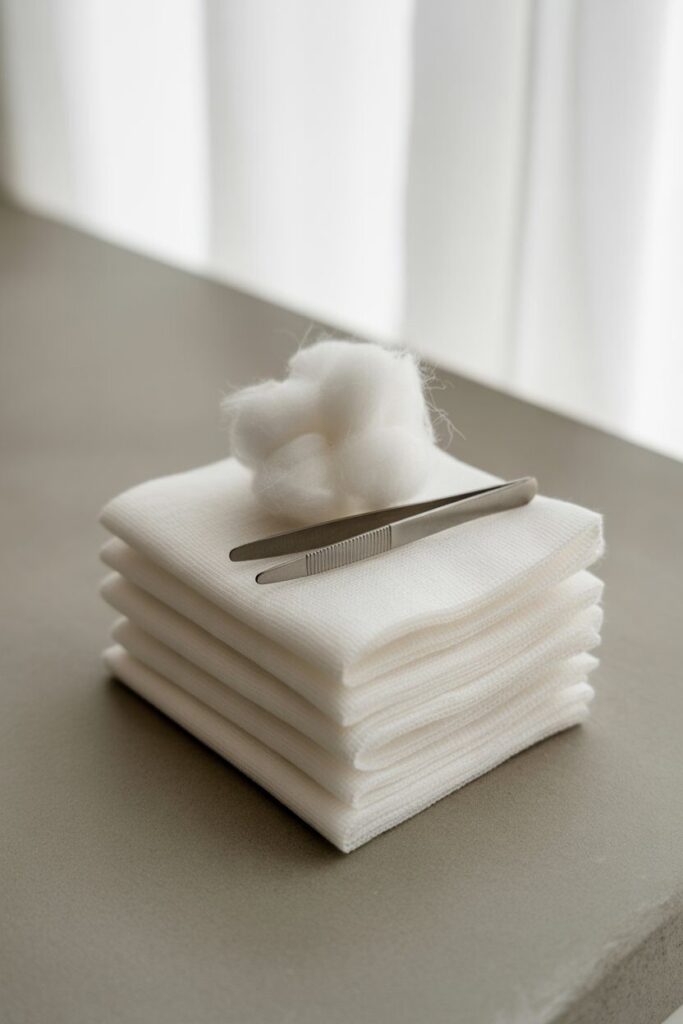
Bleeding isn’t the only problem. Sometimes you just need to clean and cover a wound until you can get to the vet. Gauze pads are perfect because they don’t stick to feathers or skin.
Cotton balls? They’re handy for wiping away blood, applying antiseptics, or cushioning a wrapped area. Just keep them out of your bird’s reach—mine once tried to shred one like it was a toy. Not cute.
3. Antiseptic Solution (Bird-Safe)
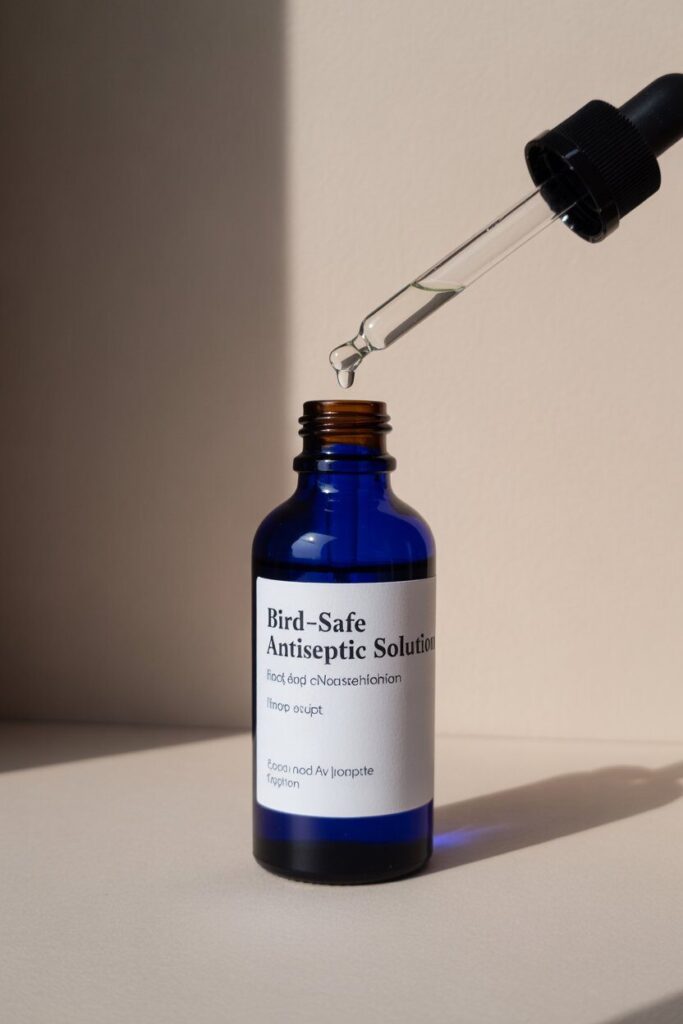
This one’s crucial: not all antiseptics are safe for birds. Forget hydrogen peroxide—it can damage tissue.
Instead, stock something like a dilute chlorhexidine or betadine solution. These clean wounds without causing more harm.
Ever wondered why birds sometimes recover slowly from injuries? It’s often because owners use the wrong stuff to clean wounds. The right antiseptic can mean faster healing and less stress for your feathered buddy.
4. Tweezers and Small Scissors
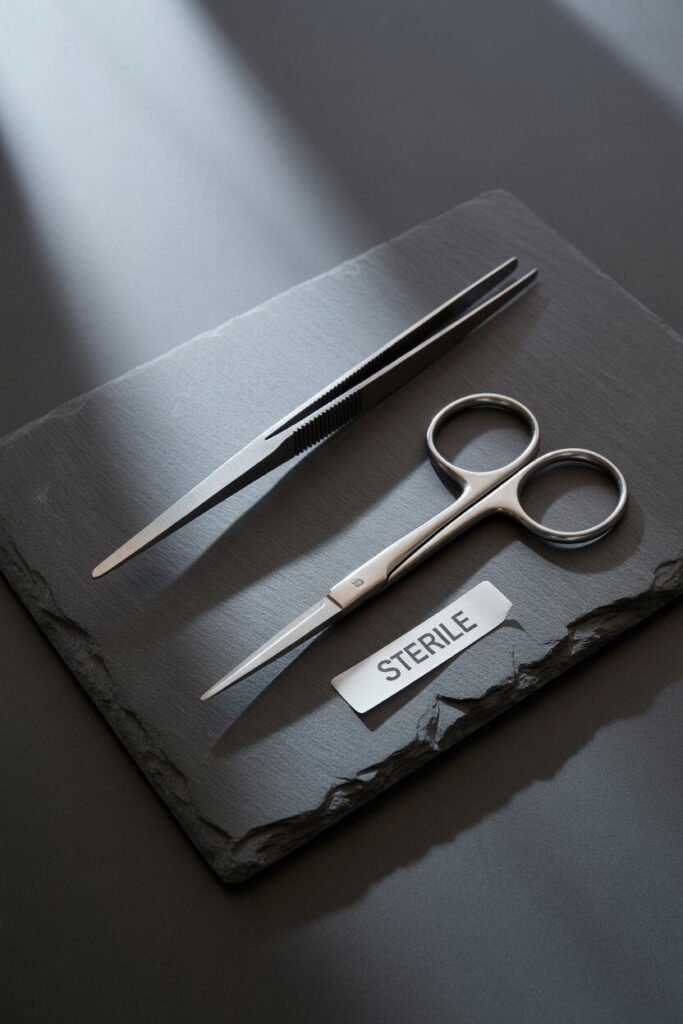
Birds are curious little troublemakers. They can get strings wrapped around their toes, or something stuck in their feathers. That’s when tweezers and scissors save the day.
- Tweezers: Great for removing splinters, debris, or even those annoying feather sheaths.
- Scissors: Use blunt-tipped ones for safety. Perfect for trimming away stuck material.
I once had to cut a thread off my cockatiel’s toe while she gave me the stink-eye the whole time. Without scissors, that would’ve been a trip to the vet.
Shop essential bird care supplies today, available on Amazon
5. Towels (Small and Medium)
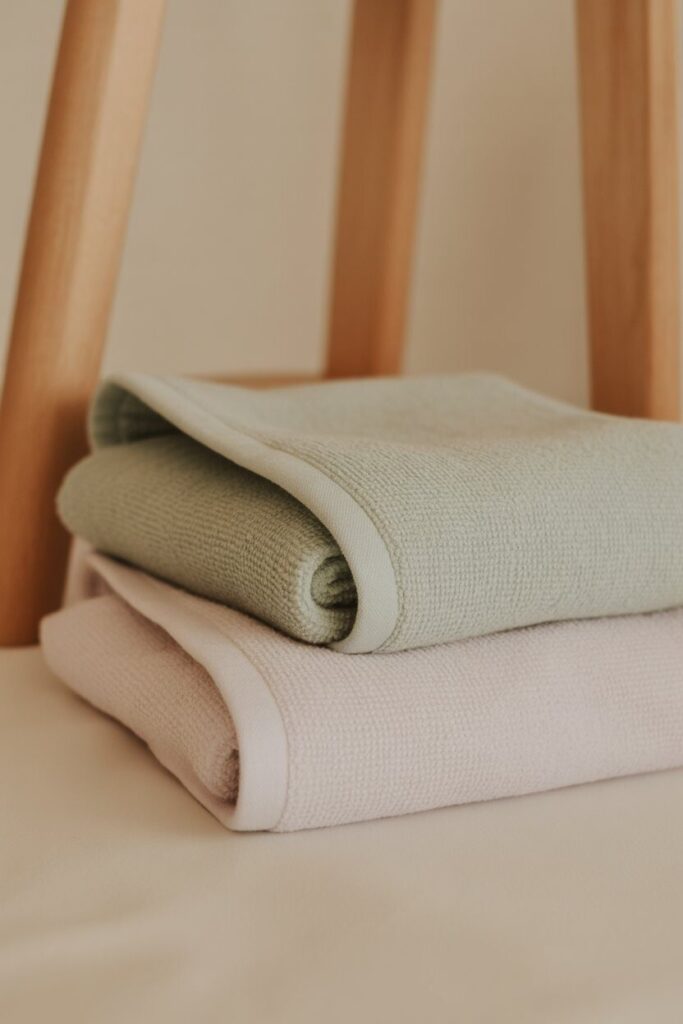
Towels are the unsung heroes of bird first aid. You can use them to safely restrain your bird when you need to check injuries or administer care. Birds tend to calm down when wrapped snugly, almost like a feathery burrito.
Keep at least two:
- A small towel for quick wraps.
- A medium towel for larger parrots.
And yes, you’ll probably end up with a towel covered in poop. Comes with the territory.
6. Syringes and Droppers
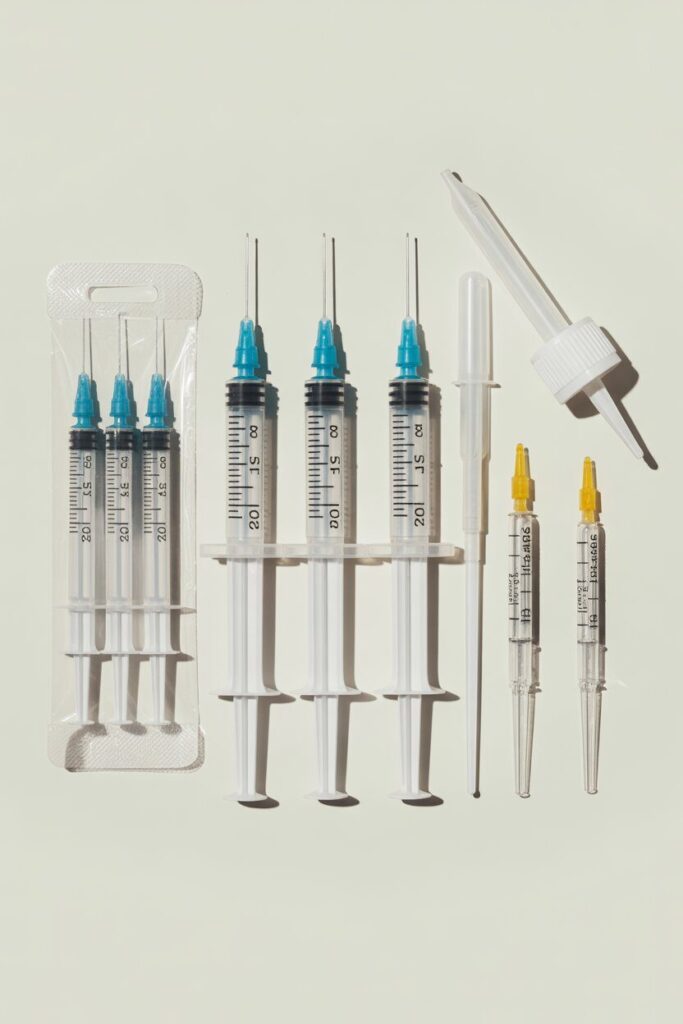
If your bird needs fluids or medication, you’ll want oral syringes or droppers. They help you measure and deliver doses accurately.
I keep a couple of sizes in my kit. Small ones for tiny birds like parakeets, and larger ones for parrots. They’re cheap, reusable, and you’ll thank yourself when the vet tells you to hydrate your bird at home.
Discover top bird first aid essentials waiting for you on Amazon
7. Heating Pad or Heat Lamp
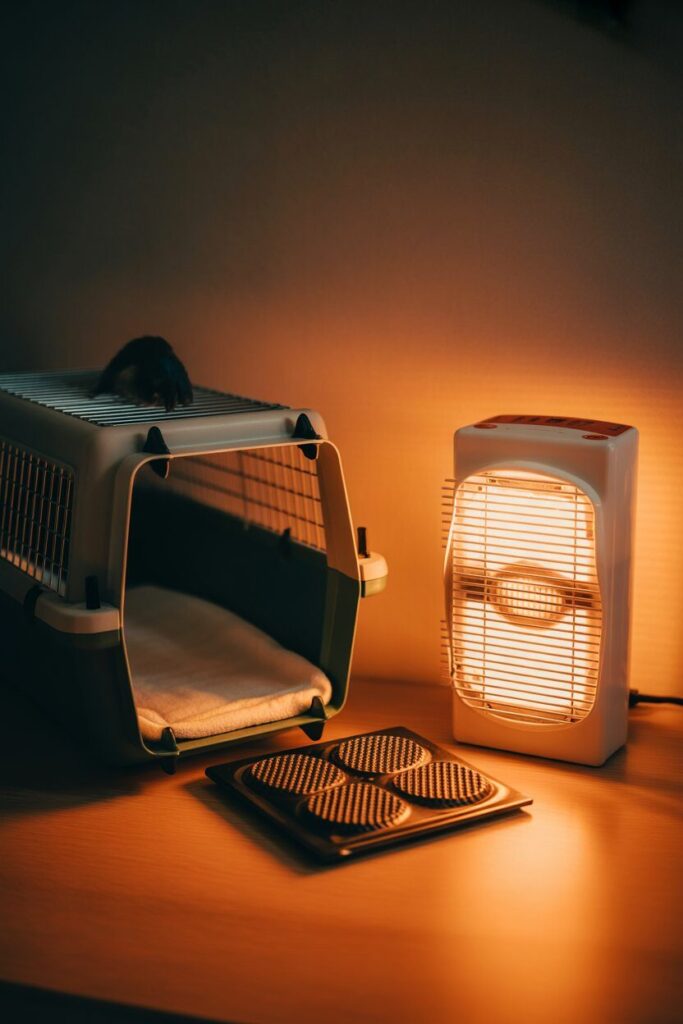
Sick or injured birds often go into shock. Their body temperature drops, and they can’t warm themselves. A heating pad under half of the cage or a heat lamp set at a safe distance can literally save a life.
Of course, never leave your bird unattended under a heat lamp. You’re trying to help them, not roast them.
8. Nail Clippers (Bird-Safe)
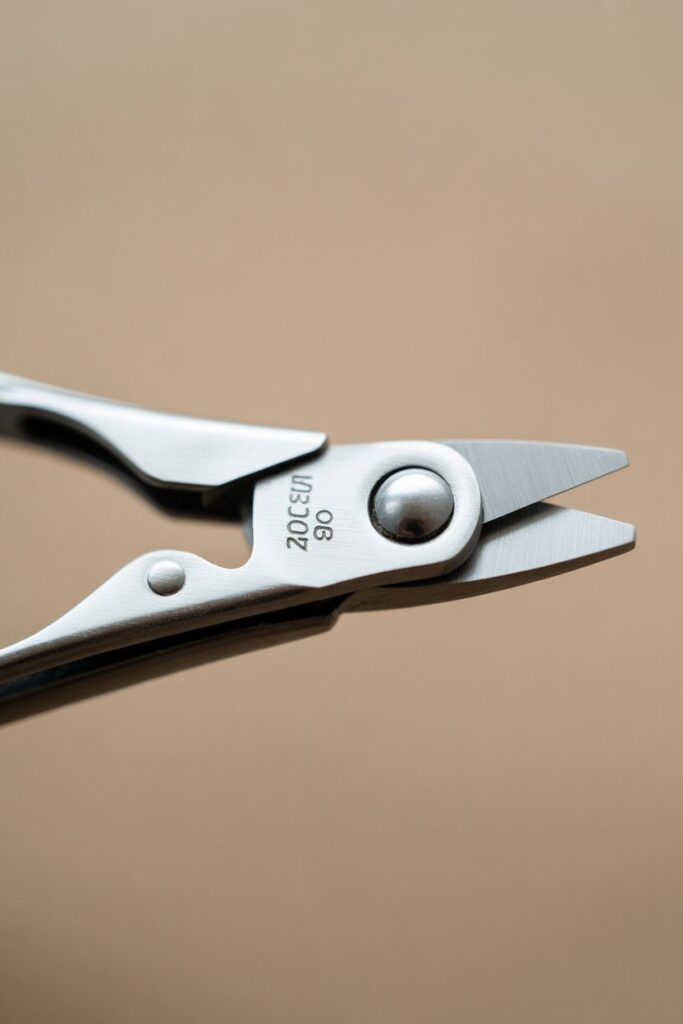
Clipping nails is part of regular care, but accidents happen. That’s why you need both clippers and the styptic powder we mentioned earlier. Always go slow, and if you’re nervous, let the vet handle it.
But having clippers on hand means you won’t have to wait until your bird’s nails look like talons.
9. Saline Solution
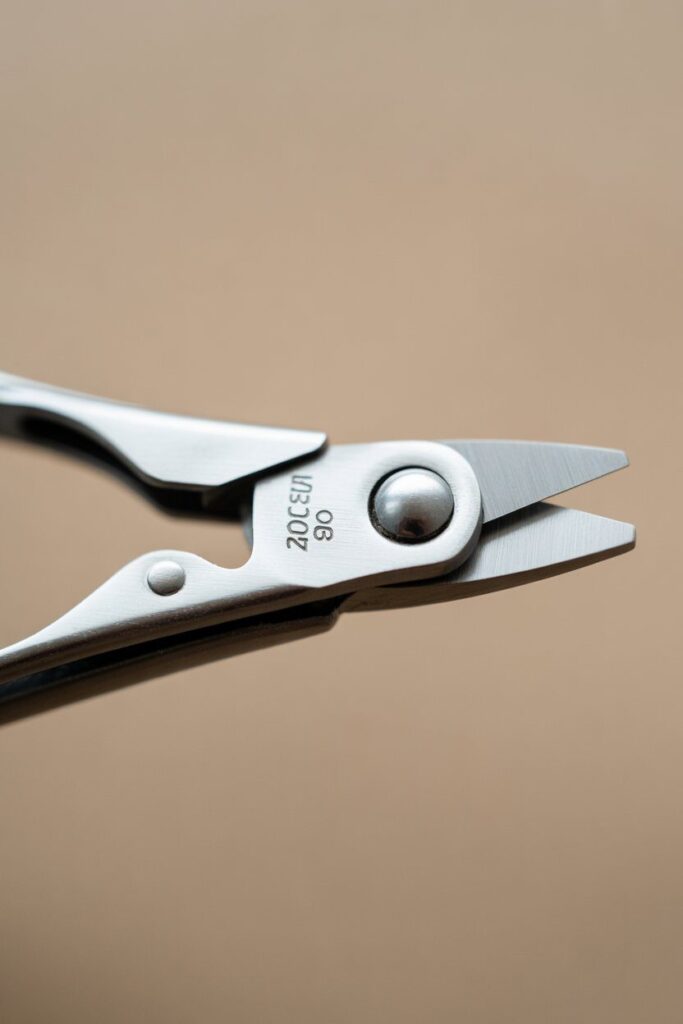
A plain sterile saline solution is perfect for flushing out eyes, wounds, or even nostrils if they get clogged with dust.
I once had to use it when my conure decided to stick her face in her food bowl mid-shake. Let’s just say she wasn’t thrilled, but it cleared her up quickly.
10. Vet Contact Information
This might sound obvious, but when panic sets in, you don’t want to waste time Googling “avian vet near me.”
Keep your vet’s phone number, address, and after-hours emergency contacts written down and stored in your kit.
When seconds count, you’ll be glad you did.
Extra Supplies That Make Life Easier
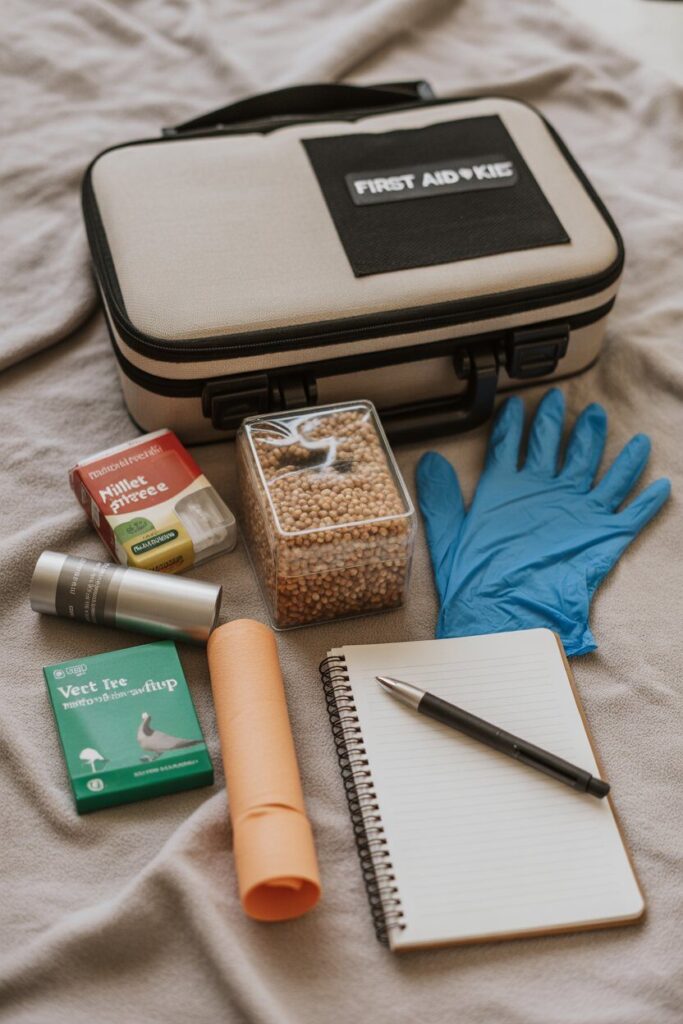
Some items aren’t essential, but they can make handling emergencies smoother.
- Latex-free gloves: Keeps things sanitary.
- Small flashlight: Helps check wounds or inspect your bird in low light.
- Digital scale: Birds hide weight loss, but the scale tells the truth.
- Travel carrier: If you need to rush to the vet, you’ll need something safe and secure.
None of these scream “first aid,” but trust me, when you need them, you’ll wish you had them.
How to Organize Your Bird First Aid Kit
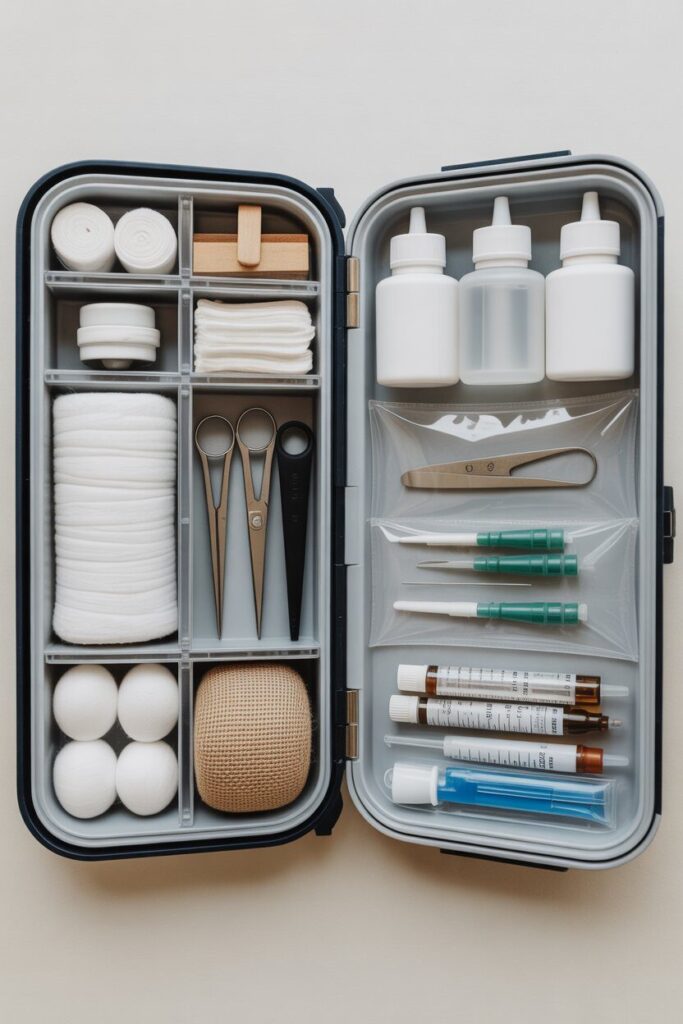
Having supplies is one thing. Actually being able to find them when your bird is bleeding? Totally different story.
Here’s how I keep mine organized:
- Use a small plastic toolbox or tackle box with compartments.
- Label sections clearly—bandages, cleaning supplies, tools, etc.
- Check expiration dates on antiseptics and replace them regularly.
- Keep the kit in a spot that’s easy to reach but out of your bird’s curious beak range.
Because let’s face it, if you leave it on a shelf, your bird will think you created a brand-new toy box just for them.
Common Bird Emergencies and How Your Kit Helps
Bleeding Toenails or Broken Feathers
Grab the styptic powder, apply it, and hold pressure with gauze until the bleeding stops. Easy fix, and it saves you a panicked vet visit.
Small Cuts or Scrapes
Clean with antiseptic solution, cover with gauze if needed, and monitor for signs of infection. Birds heal quickly if you catch it early.
Shock or Weakness
Move your bird to a quiet, warm spot with a heating pad under the cage. Offer fluids with a syringe if they can swallow safely, then call the vet.
Foreign Objects
If something’s wrapped around a toe or wing, grab your tweezers or scissors. Don’t yank—be gentle and patient.
Keeping Calm When It’s Not Calm
Here’s the thing about bird emergencies: they never happen at a convenient time. It’s always when you’re about to leave for work, or at midnight when no vet is open.
The best advice I can give is this: stay calm. Your bird will mirror your energy. If you panic, they panic. If you stay steady and use the supplies you’ve prepared, you’ll handle the situation far better.
And remember, the kit doesn’t replace professional care. It just helps you stabilize your bird until you get proper help.
Conclusion
So, what’s the takeaway here? If you love your bird (and I know you do), build a first aid kit now. Don’t wait until you’re scrambling with a bleeding parakeet or a cockatiel in shock.
Stock up on styptic powder, antiseptics, gauze, towels, tweezers, and the other essentials we covered.
I can tell you from experience, nothing feels better than being prepared. And honestly, your bird deserves it. They rely on you for everything, including handling the curveballs life throws their way.
Next time you look at your feathered buddy happily chirping, just remember: accidents happen, but with a proper kit, you’re ready to handle them like a pro.
What Should Be in a Bird First Aid Kit?
A bird first aid kit should have styptic powder, antiseptic solution, gauze, tweezers, small scissors, cotton balls, towels, syringes, and saline solution.
These items handle common injuries like broken blood feathers, small cuts, or foreign objects stuck to toes or wings.
I also recommend adding your avian vet’s contact info, a small flashlight, and latex-free gloves. While not always needed, these extras can ease emergencies.
Keeping everything organized and ready will save you time when your bird needs help.
Why Is Styptic Powder Important for Birds?
Styptic powder is essential for stopping bleeding fast. Birds can lose a lot of blood from a small injury, like a clipped nail that’s too short.
Apply styptic powder directly to the wound to control the bleeding before it gets serious.
If you don’t have styptic powder, plain cornstarch can serve as a backup. Still, nothing beats having the real thing on hand. Since birds are delicate, this is a must-have item you should always include in your kit.
Can I Use Hydrogen Peroxide on My Bird’s Wound?
No, hydrogen peroxide isn’t safe for birds. It can harm surrounding tissue and slow healing. This is not ideal when your bird is already stressed.
Instead, avian vets suggest using diluted betadine or chlorhexidine solutions.
These bird-safe antiseptics clean wounds well without hurting tissue. I keep a small bottle of betadine in my kit.
It’s easy to find and works effectively. Choosing the right antiseptic helps your bird heal quickly and comfortably.
How Do I Keep My Bird Calm During First Aid?
Birds sense your energy. If you panic, your bird will too. To keep them calm, stay steady, speak softly, and gently use a towel if needed. Many birds relax when wrapped in a towel as it makes them feel safe.
Creating a quiet space helps a lot. Turn off loud noises, dim the lights, and be gentle and patient. Your calmness will reassure your bird and make first aid easier for both of you.
When Should I Call the Vet After Using My First Aid Kit?
Call your vet if the bleeding doesn’t stop soon, if the wound seems severe, or if your bird shows shock signs like weakness or fluffing up. A first aid kit can help stabilize your bird, but it can’t replace professional care.
Even for small injuries, it’s wise to contact your avian vet for advice. What seems minor can become serious. In my experience, vets appreciate when owners act quickly instead of waiting for problems to worsen.
